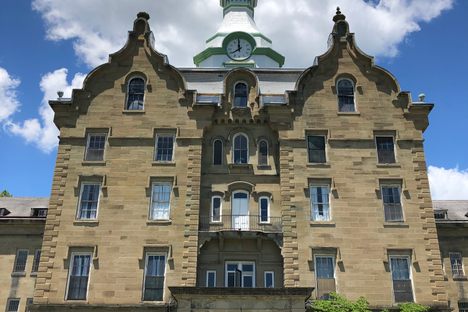18 Abandoned Psychiatric Hospitals, and Why They Were Left Behind
Explore the ghosts of mental-health history.
Prior to the 19th century there was little distinction between lunatic asylums, as the primitive mental-health facilities were known, poorhouses, and jails. Those unable to fit into society were shut away in these squalid facilities, sometimes for their entire lives.
The Kirkbride Plan was introduced in the mid-19th century to get rid of all that. A more humane approach to mental health, the plan focused on care and treatment in psychiatric institutions rather than mere containment. Open buildings and rehabilitative programs involving art, farming, and therapy improved the lives of the individuals with mental illness who lived at one of the rash of new hospitals that opened in the late 1800s.
While this was undoubtedly an improvement on the conditions of previous mental-health care, Kirkbride-style facilities were overpopulated, understaffed, and again became a dumping ground for people with developmental disabilities. Reports of maltreatment became increasingly common, especially when the 1950s and ’60s brought about sedative pharmaceutical treatments. The institutions were defunded, and community-based treatment facilities eclipsed the imposing, prison-like Victorian hospitals.
Hundreds of psychiatric institutions opened between the mid-1800s and the 1910s, most of which were abandoned during deinstitutionalization. Few of these ruins are still around; many have been converted into condos, schools, or museums, with others slated for demolition in the near future. But the ruins of some abandoned asylums still stand. Here are 18 places where you can explore the ghosts of psychiatric history.









































Follow us on Twitter to get the latest on the world's hidden wonders.
Like us on Facebook to get the latest on the world's hidden wonders.
Follow us on Twitter Like us on Facebook